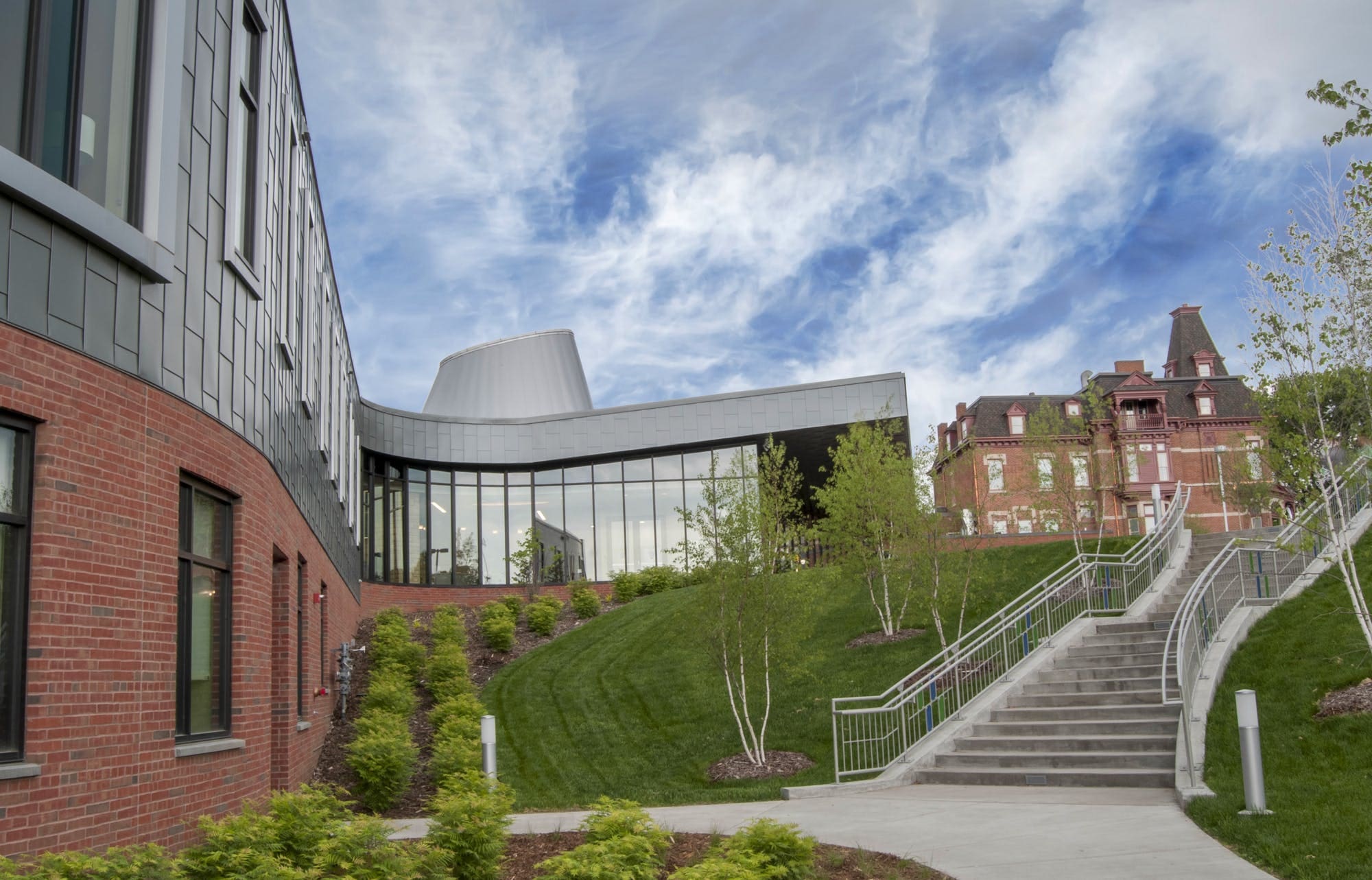
Photography provided by Hazelden Betty Ford
Although Hazelden Betty Ford is a world-class institution, it remains shrouded in secrecy. The clinic that first opened in a rural Minnesota farmhouse in 1949 has been responsible for major innovations in addiction treatment, and yet, because it closely guards the privacy of its clients, it remains somewhat of a mystery to the general public.
So what is it really like at Hazelden? As it turns out, no two stays are alike. The clinic’s signature approach is one of individualized care that aims to uncover the tapestry of factors across the nature-nurture divide that contribute to each individual’s unique situation. Which is why you won’t find any cookie-cutter approaches here, says Director of Communications and Public Affairs Jeremiah Gardner, who is in recovery himself. Instead, stints at the center are as varied as the people who walk through its doors.
One person who did just that in December 2010 is musician Johnny Solomon of Communist Daughter fame. Then 31, he was addicted to meth after years of daily use. “I had a show at First Ave., and I was just so broken inside,” he recalls. Backstage, he called Hazelden while fans clamored in the Mainroom, oblivious to the fact that Solomon’s band at the time, Friends Like These, was unraveling at the seams because of his all-encompassing addiction.

Ali, now 29, entered the clinic several years back at the behest of her parents. Fresh off a stint in California where she “made a bunch of messes and took a bunch of ecstasy,” she wanted a clean break. Her stay began like most, with a closely monitored detox: “You’re sequestered in this room, and someone comes in every hour or two to check your vitals while you’re sleeping to make sure you’re not going into withdrawal.”
Although Ali’s experience fell in line with a typical 28-day stint, Hazelden has moved away from that standard. “We bring people in at various levels of care and transition them to lower levels as soon as they’re ready, with the goal of keeping them engaged in some level of care as long as possible,” Gardner explains. Today, the average engagement lasts 59 days.
Ali remembers a stark divide between men and women — “You can’t talk to members of the opposite sex because people try to fuck in rehab” — and plenty of downtime punctuated by group therapy, homework assignments and Alcoholics Anonymous meetings. Patients are also encouraged to make their bed upon rising (an easy way to start the day with an accomplishment), and many spend one-on-one time with counselors.
“I think what was most helpful is that they treat you like a baby,” Ali says. “And when you’re about to leave, they set you up with aftercare.” Because Hazelden sees recovery as a lifelong practice, treatment often continues through the transition into society; assistance ranges from placement in sober housing to help locating nearby AA meetings.
Solomon’s stay there took a decidedly different route than Ali’s. When he checked in, he had alcohol on his breath and scabs on his body, betraying the places where meth had driven him to pick at his own skin. “I felt really seen there,” he recalls. “I felt like they could reach in underneath all of that and deal with me as a person.”
He filled his days with morning walks, lectures, study groups and counselor meetings. “I just remember how much time I spent with patients coming back to life,” he says. Solomon also recalls the time a psychiatrist called his mother to inquire about his past. “I had been in and out of hospitals, and no one had called to ask her about the family history,” he explains, adding that he recently ran into that psychiatrist and thanked him for saving his life.
Solomon left the clinic in February 2011 and remains sober to this day. He’s currently pursuing a degree in addiction counseling at the institution’s Graduate School of Addiction Studies, a fully accredited program with both on-campus and online courses.
The efficacy of Hazelden’s approach is evident in the numbers published in a 2017 report: 88.64% of patients remain alcohol-free a month after rehab, 85% to 95% remain abstinent from all other drugs nine months afterward, and 80% report improved health and quality of life.
“What sets us apart is a willingness to embrace what we know works but also being open to new developments that will help our patients have a better chance at lifelong recovery,” Gardner concludes.



